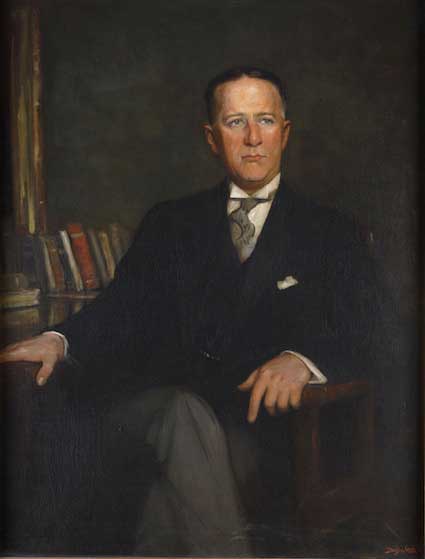Local historians have served communities for over 100 years
“Overlooked Orleans” – Vol. 6, No. 1
Now that 2019 has concluded, the centennial celebration of the legislation requiring each municipality in New York to appoint a local historian has also passed. Signed into law by Gov. Al Smith on April 11, 1919, New York became the first and only state to mandate the appointment of municipal historians.

Gubernatorial portrait of Al Smith of New York, by Douglas Volk
This legislation resulted from efforts to preserve the histories of New York servicemen and the impact of the First World War on local communities. Under the direction of James Sullivan and Alexander Flick, local government historians gathered service information from their respective communities and sent those reports to the State Historian.
The language requiring each municipality to appoint an historian is found within Section 57.07 of the NYS Arts and Cultural Affairs Law. Local Government Historian Law stipulates that each city, town, or village shall appoint an historian, except for any city with a population of over one million in which case an historian shall be appointed for each borough.
In the case of counties, the Board of Supervisors is permitted to appoint a county historian tasked largely with supporting the work of city, village, and town historians within their boundaries. Although the law provided municipalities with the authority to appropriate funds to support the work of local historians, it does not require that the appointed historian be compensated for their work.
Each historian is tasked with one overarching responsibility, to preserve government records with “enduring value for historical and other research” while assisting with coordinated efforts to develop collections of non-government records. Ultimately, the goal of local historians is to encourage the use of these collections for research that creates an understanding and appreciation of their community’s history.
This language is relatively broad, but the State further defined the responsibilities of municipal historians as categorized in four major areas; research and writing, education and programming, historic preservation, and organization, advocacy, and tourism. Since its inception, the interpretation of the law and the duties outlined within it have changed to reflect new methods of engaging with communities, including the use of technology to preserve information in an increasingly digital world.
Over the last 100 years, villages and towns in Orleans County have filled their posts with highly proficient and passionate historians. Yet for many municipalities, identifying residents willing to fill the vacancies for nominal stipends, or no remuneration at all, has proved challenging.
In 1929, the Village of Albion appointed Lillian Achilles to serve as its first historian, nearly ten years after the passing of the Local Government Historian Law. At the county level, it was not until 1944 when Joseph Achilles was appointed as historian that the position was made salaried at $900 per year.
As for those early records of service during World War One, the NYS Archives has digitized these collections and made them available for free to residents of New York. Of those in Orleans County, four town historians submitted information including H. Clure White of Gaines, Mary Bamber of Carlton, Fred T. Potter of Clarendon, and Charles Burt of Kendall.





































































